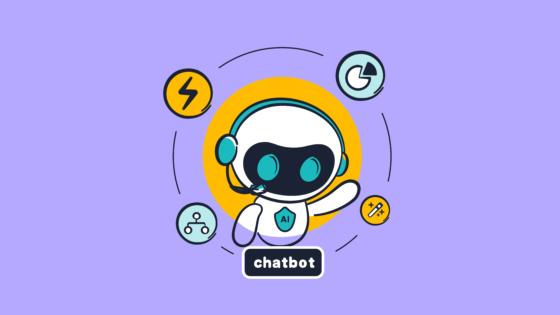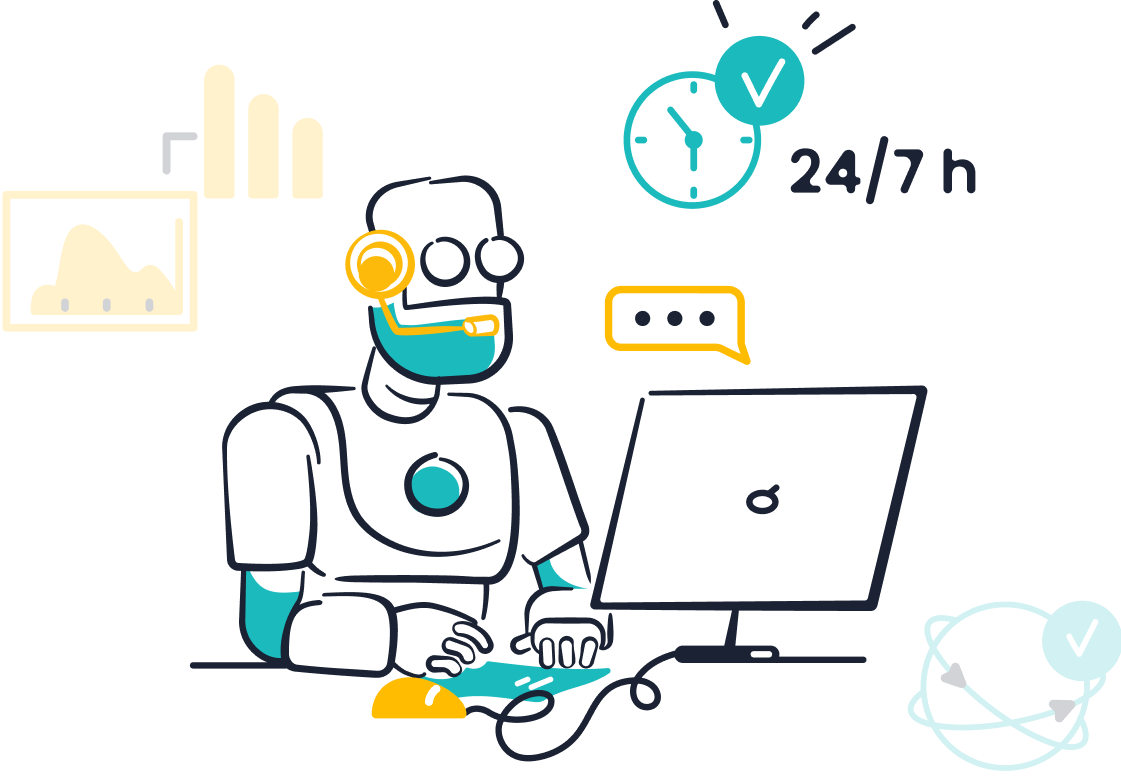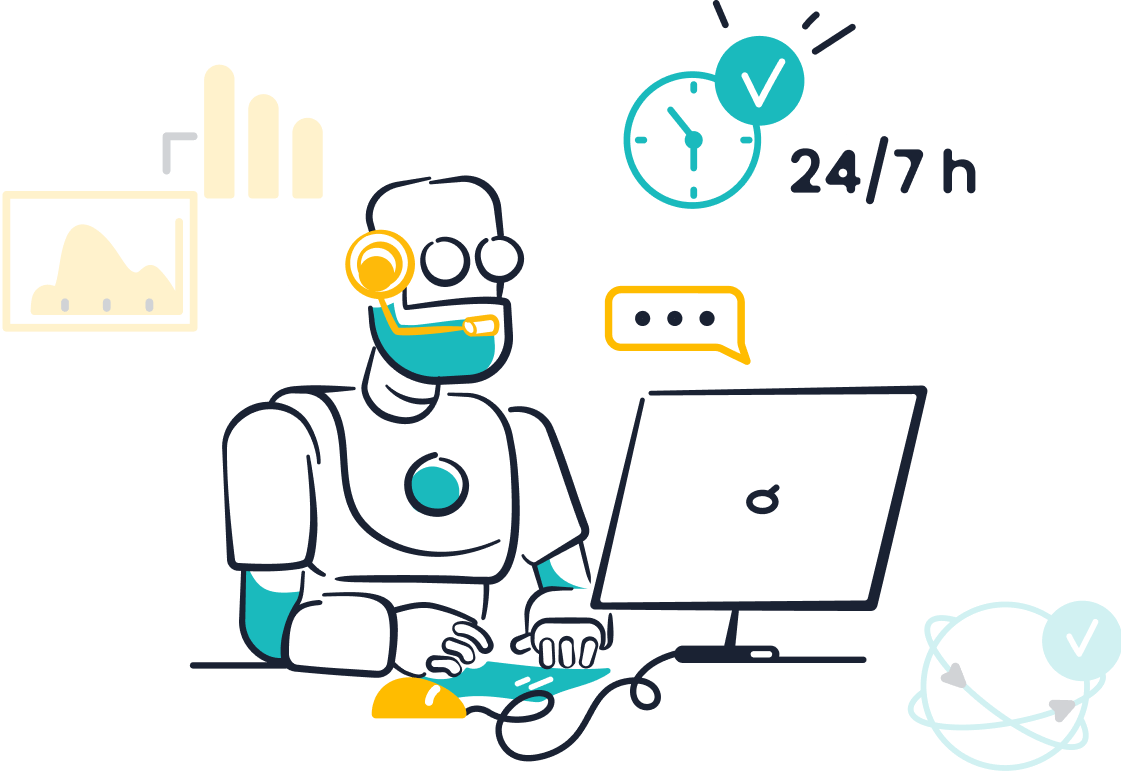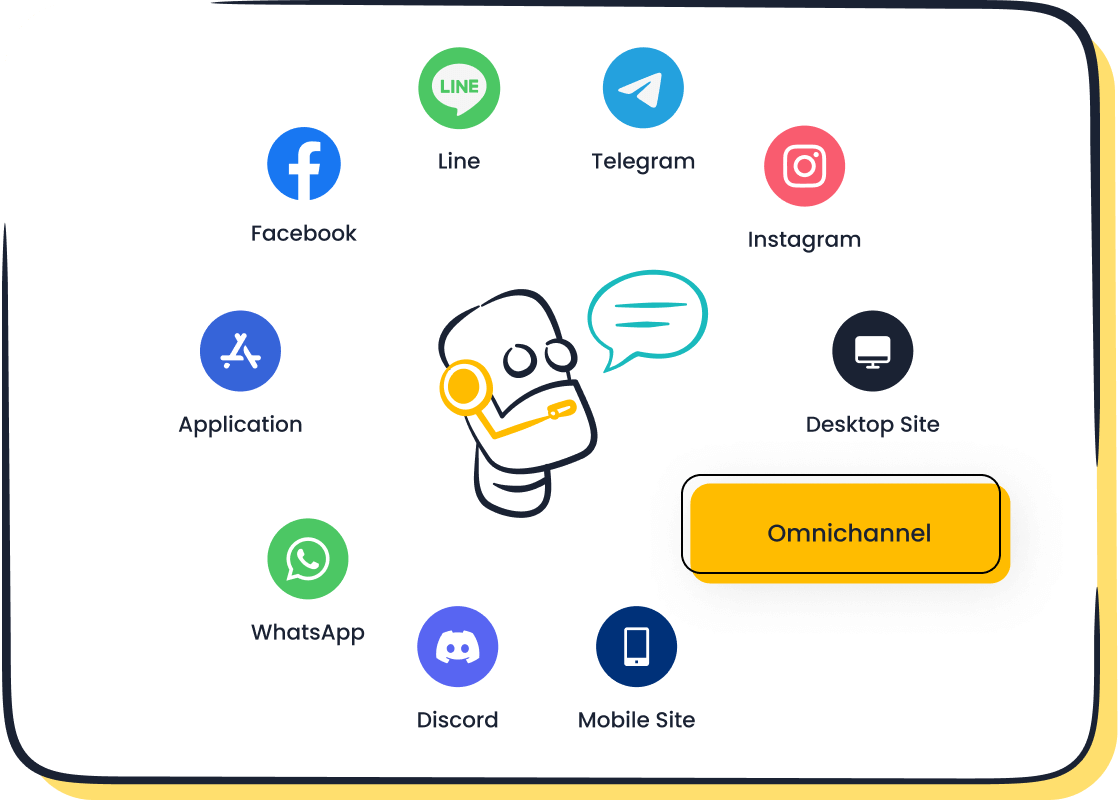Comparing Automated Chatbots Online for Businesses

In today’s fast-paced world, businesses rely on automated chatbots online to enhance customer service and streamline operations. These tools provide instant responses, which 69% of consumers prefer for resolving queries. Additionally, 74% of customers choose chatbots over human agents for simple questions, showcasing their efficiency in handling routine tasks.
AI chatbot platforms play a pivotal role in business automation. They save time by managing up to 80% of repetitive tasks and customer inquiries. This efficiency not only reduces costs but also allows your team to focus on complex challenges. The chatbot market, valued at $7.76 billion in 2024, is expected to grow at a 23.3% CAGR, reflecting its increasing importance in automation.
When comparing platforms, consider factors like scalability, ease of use, and integration capabilities. For instance, Sobot’s AI-driven communication solutions offer multilingual support and 24/7 availability, making it a versatile choice for businesses aiming to improve customer satisfaction and operational efficiency.
What Are AI Chatbots and Their Role in Business Automation?

Definition of AI Chatbots
How AI chatbots simulate human-like conversations
AI chatbots are software tools designed to simulate human conversations across various communication channels. They use advanced algorithms to understand user input and respond in a way that feels natural. For example, when a customer asks about product availability, the chatbot can provide immediate answers, mimicking the tone and flow of human interaction. These virtual assistants act as a bridge between businesses and customers, offering instant support and personalized experiences.
Technologies powering AI chatbots (e.g., NLP, machine learning)
AI chatbots rely on technologies like Natural Language Processing (NLP) and machine learning to enhance their capabilities. NLP enables chatbots to interpret and process human language, while machine learning allows them to improve over time by analyzing past interactions. Some advanced chatbots, like virtual agents, combine conversational AI with robotic process automation to act on user intent without human intervention. These technologies empower businesses to deliver accurate and efficient ai-powered customer service.
Benefits of AI Chatbots for Businesses
Enhancing customer service and support

AI chatbots revolutionize customer service by providing 24/7 support. They handle routine inquiries, such as FAQs, freeing up human agents to focus on complex issues. For instance, Sobot’s AI chatbot offers multilingual support and omnichannel capabilities, ensuring seamless customer engagement across platforms like WhatsApp and SMS. This approach improves response times and enhances customer satisfaction.
Automating repetitive tasks to save time and resources

AI chatbots excel at automating repetitive tasks, such as order tracking and feedback collection. By triaging queries and assisting agents, they save businesses valuable time and resources. Sobot’s chatbot, for example, boosts productivity by 70% and reduces costs by up to 50%. This efficiency allows your team to concentrate on strategic initiatives, driving business automation forward.
Common Use Cases for AI Chatbots
Customer service and support
AI chatbots play a vital role in customer service. They provide instant answers to common questions, track orders, and offer real-time updates. For global businesses, their 24/7 availability ensures continuous support, enhancing customer engagement and satisfaction.
Lead generation and sales automation
Chatbots assist in lead qualification and nurturing prospects. They analyze customer data to provide tailored product recommendations, boosting sales and reducing bounce rates. For example, abandoned cart recovery bots remind customers of items left in their carts, helping businesses recover lost sales.
Internal business processes (e.g., HR, IT support)
AI chatbots streamline internal operations by automating tasks like employee onboarding and IT troubleshooting. They act as virtual assistants, providing quick solutions and reducing the workload on HR and IT teams. This automation improves efficiency and supports business growth.
Top AI Chatbot Platforms for Business Automation
ChatGPT by OpenAI
Features and capabilities
ChatGPT by OpenAI stands out as one of the best AI chatbot solutions for businesses. It uses advanced natural language processing (NLP) to deliver human-like conversations. This platform excels in generating text, summarizing information, and personalizing responses. Businesses can use it to automate customer service, streamline email correspondence, and even assist with decision-making. Its adaptability makes it suitable for various industries, from retail to education.
| Metric Description | Percentage |
|---|---|
| Leaders believing GPT will positively influence operations | 97% |
| Entrepreneurs intending to use it for chatbot responses | 74% |
| CMOs reporting positive improvements in work organization | 93% |

Pros and cons for business use
ChatGPT offers several advantages. It improves productivity by up to 30% and provides a more personalized experience for 58% of entrepreneurs. However, it may require technical expertise for integration and customization. For businesses seeking a versatile platform, ChatGPT remains a top choice.
Google Bard
Unique offerings and integrations
Google Bard is another leading platform in the AI chatbot market. It supports 43 languages and operates in 230 countries, making it ideal for global businesses. Bard excels in research, creative tasks, and educational assistance. Its integration with Google Workspace enhances productivity by automating tasks like scheduling and document creation.
| Statistic Description | Value |
|---|---|
| Monthly visitors | 140.6 million |
| Users utilizing Bard for research | 40% |
| Users seeking assistance with work/education | 20% |

Limitations and best use cases
While Bard is excellent for creative and research tasks, it may not be as effective for handling complex customer service queries. Businesses in education and content creation will benefit the most from this platform.
Sobot Chatbot
Key features and advantages for business automation
Sobot Chatbot is a powerful tool designed to enhance customer service and operational efficiency. It offers omnichannel support, allowing interactions across platforms like WhatsApp and SMS. The chatbot operates 24/7, handles multiple languages, and uses a no-coding-required interface for easy setup. It improves productivity by 70% and reduces costs by up to 50%.
| Use Case | Description | Benefits |
|---|---|---|
| Automated Order Processing | Simplifies checkout and payment processes in eCommerce. | Reduces cart abandonment rates and improves overall shopping experience. |
| 24/7 Support | Provides continuous assistance for customer queries. | Enhances customer service by offering support across different time zones. |
| Call Center Automation | Automates help desk tasks and FAQs. | Frees up staff to focus on complex issues, improving call center efficiency. |
How Sobot Chatbot enhances customer service and efficiency
Sobot Chatbot transforms customer service by automating routine tasks and providing instant responses. For example, Agilent, a global leader in life sciences, achieved a sixfold increase in efficiency and a 25% cost reduction using Sobot. The chatbot’s ability to handle inquiries autonomously allows your team to focus on strategic goals, making it one of the best AI chatbot platforms for business automation.
Drift
Focus on sales and marketing automation
Drift specializes in sales and marketing automation, making it a go-to platform for businesses aiming to enhance customer engagement. Its chatbot focuses on conversational marketing, helping you connect with potential customers in real time. Drift’s AI-powered bots qualify leads, schedule meetings, and provide personalized recommendations. This approach reduces response times and improves conversion rates. For example, Drift’s chatbots can engage website visitors by asking targeted questions, ensuring you capture high-quality leads.
Drift also integrates seamlessly with CRM tools like Salesforce, enabling you to track customer interactions and streamline your sales funnel. Its focus on proactive engagement ensures that your team can prioritize high-value prospects. Businesses using Drift have reported a 20% increase in lead generation efficiency, showcasing its impact on sales automation.
Strengths and weaknesses
Drift’s strengths lie in its ability to drive sales through conversational marketing. Its chatbot excels at engaging prospects and automating repetitive tasks, saving your team valuable time. The platform’s integration capabilities with popular CRM tools further enhance its utility. However, Drift’s pricing can be a barrier for small businesses. Its advanced features are often locked behind higher-tier plans, which may not be accessible to all.
Other Notable Platforms
Kore.ai and its advanced customizability
Kore.ai stands out for its advanced customizability, making it ideal for businesses with unique requirements. Its chatbot builder allows you to design workflows tailored to your specific needs. Kore.ai supports voice and text interactions, providing a versatile solution for customer engagement. For instance, its bots can handle complex queries in industries like healthcare and finance, where accuracy is critical.
Despite its strengths, Kore.ai’s complexity may require technical expertise for setup and maintenance. This makes it more suitable for larger enterprises with dedicated IT teams.
Tidio and its intuitive chatbot builder
Tidio offers an intuitive chatbot builder, perfect for small and medium-sized businesses. Its drag-and-drop interface allows you to create chatbots without any coding knowledge. Tidio’s bots can handle customer inquiries, send automated messages, and even recover abandoned carts. This makes it a valuable tool for eCommerce businesses looking to improve customer retention.
However, Tidio’s free plan comes with limited features, which may not meet the needs of growing businesses. Upgrading to a paid plan unlocks advanced functionalities like analytics and integrations.
| Platform | Features & Strengths | Weaknesses & Pricing |
|---|---|---|
| ChatGPT | Versatile conversational agent, excels in natural language understanding, generates coherent text. | Static knowledge base, may lack real-time data. |
| SurveyMonkey | Extensive library of templates, AI-powered solutions for market research. | Basic features limited, advanced options require upgrades. |
| Attest | Real-time consumer research, strong data quality measures, global audience reach. | Limited visualization options. |
| QuestionPro | Advanced survey design, real-time analytics, supports complex question types. | Limited reporting customization. |
Free vs Paid Chatbot Solutions: Which Is Right for Your Business?
Advantages of Free Chatbot Platforms
Cost-effectiveness for small businesses
Free chatbot platforms provide an excellent starting point for small businesses. They allow you to test chatbot functionality without any upfront costs. This makes them ideal for businesses with limited budgets or those exploring chatbot solutions for the first time. For example, free platforms can automate up to 30% of routine tasks, potentially saving $23 billion annually in the U.S. However, these solutions often come with restricted features, which may limit their ability to handle complex customer service needs.
Basic features and limitations
Free chatbots typically offer basic features like answering FAQs or providing simple responses. While this is sufficient for small-scale implementations, these platforms often lack advanced AI capabilities, customization options, and robust analytics. A negative chatbot experience can drive away 65% of users, highlighting the risks of relying solely on free solutions.
| Type of Solution | Advantages | Limitations |
|---|---|---|
| Free AI Chatbot Platforms | No upfront costs, great for small businesses. | Limited features, restricted customization, and lack of advanced AI tools. |
Benefits of Paid Chatbot Solutions
Advanced features like personalization and analytics
Paid chatbot solutions offer advanced features that elevate customer service. These include personalization, multilingual support, and detailed analytics. For instance, 71% of consumers expect personalized interactions, and 76% feel frustrated when this is missing. Paid solutions use technologies like NLP and machine learning to deliver tailored experiences, improving customer satisfaction and ROI.
Scalability for growing businesses
As your business grows, scalability becomes crucial. Paid chatbots adapt to increasing demands, offering extensive customization and robust support. For example, TechStyle saved $1.1 million in operational costs within a year by implementing a paid chatbot solution. These platforms ensure your chatbot evolves with your business, meeting both current and future needs.
How to Decide Between Free and Paid Options
Assessing your business needs and budget
Start by evaluating your business requirements. If you need a chatbot for basic tasks, a free platform might suffice. However, for advanced process automation or multilingual customer service, a paid solution is more suitable. Consider your budget and the potential savings from automation.
Evaluating the ROI of paid solutions
Paid chatbots often provide better ROI for serious applications. For example, Barking & Dagenham Council reduced costs by £48,000 in six months while increasing customer satisfaction by 67%. Analyze how a paid solution can streamline operations and enhance customer interactions.
Tip: Begin with a free trial of a paid chatbot to assess its fit for your business before committing to a subscription.
Advanced AI Chatbots vs Traditional Options
What Makes Advanced AI Chatbots Different?
Real-time learning and adaptability
Advanced AI chatbots stand out due to their ability to learn and adapt in real time. Unlike traditional chatbots, which rely on predefined scripts, advanced AI chatbots use technologies like Large Language Models (LLMs) and reinforcement learning from human feedback (RLHF). These tools enable them to recognize patterns, predict user needs, and continuously improve their responses. For example, early chatbots like SmarterChild demonstrated adaptability by learning from interactions, paving the way for modern AI chatbots. Today, platforms like ChatGPT can analyze past conversations to refine their understanding, ensuring more accurate and relevant responses.
Enhanced realism in conversations
Advanced AI chatbots excel in creating human-like interactions. They use advanced natural language processing (NLP) to understand nuanced language and respond with contextually appropriate answers. A survey revealed that 67% of users felt AI chatbots like ChatGPT fully understood their queries, compared to 49% for traditional chatbots. This enhanced realism fosters better customer engagement and satisfaction, making advanced AI chatbots ideal for businesses aiming to deliver personalized customer service.
Limitations of Traditional Chatbots
Rule-based responses and lack of flexibility
Traditional chatbots operate on rule-based systems, limiting their ability to handle dynamic conversations. They follow predefined scripts, which restrict their responses to specific keywords or phrases. This rigidity makes them efficient for predictable tasks but unsuitable for complex interactions. For instance, they struggle to adapt when users rephrase questions or introduce new topics.
Challenges in handling complex queries
Traditional chatbots often fail to address complex or emotionally charged inquiries. They lack the empathy and contextual understanding needed to interpret nuanced language. A comparison highlights these limitations:
| Feature | Traditional Chatbots | Advanced AI Chatbots |
|---|---|---|
| Contextual Understanding | Lacks contextual understanding | Excels in understanding nuanced language |
| Response Type | Provides generic responses | Offers personalized interactions |
| Language Complexity | Struggles with complex language | Accurately interprets and responds with advanced NLP algorithms |
These shortcomings can lead to customer frustration, especially in industries requiring detailed or sensitive communication.
Choosing the Right Type of Chatbot for Your Business
Factors to consider (e.g., industry, customer expectations)
Selecting the right chatbot depends on your business needs. Start by identifying the specific challenges you want to address. For instance, if your goal is to automate repetitive tasks, a traditional chatbot may suffice. However, industries like healthcare or finance, which require nuanced communication, benefit more from advanced AI chatbots. Consider factors like customization, integration capabilities, scalability, and multilingual support to ensure the chatbot aligns with your business goals.
Examples of businesses benefiting from advanced AI chatbots
Businesses across various sectors have successfully implemented advanced AI chatbots. For example, Agilent, a leader in life sciences, used Sobot’s AI chatbot to achieve a sixfold increase in customer service efficiency. The chatbot handled routine inquiries, allowing human agents to focus on complex issues. This approach not only reduced costs by 25% but also improved customer satisfaction to 95%. Such examples highlight the transformative potential of advanced AI chatbots in enhancing operational efficiency and customer engagement.
Comparing Popular AI Chatbot Platforms

ChatGPT vs Google Bard
Key differences in features and use cases
ChatGPT and Google Bard are two leading AI chatbot platforms, each with unique strengths. ChatGPT excels in generating human-like conversations and is highly adaptable across industries like retail and education. It uses advanced natural language processing (NLP) to provide personalized responses, making it ideal for businesses seeking versatile solutions. On the other hand, Google Bard focuses on creative tasks, research, and educational assistance. Its integration with Google Workspace enhances productivity by automating tasks like scheduling and document creation. While ChatGPT is better for customer engagement, Bard shines in content creation and academic support.
Which platform is better for customer service?
For customer service, ChatGPT offers a clear advantage. Its ability to handle complex queries and provide personalized interactions makes it a reliable choice for businesses aiming to enhance customer satisfaction. Bard, while excellent for research, lacks the depth needed for handling intricate customer interactions. Businesses prioritizing customer service should consider ChatGPT for its robust conversational capabilities.
Drift vs Sobot Chatbot
Focus areas and target audiences

Drift specializes in sales and marketing automation. Its chatbot focuses on conversational marketing, helping businesses qualify leads and schedule meetings. Drift is ideal for companies aiming to boost sales through real-time engagement. In contrast, Sobot Chatbot offers a broader focus. It enhances customer service and operational efficiency with features like omnichannel support and multilingual capabilities. Sobot serves diverse industries, including retail, finance, and life sciences, making it a versatile choice for businesses of all sizes.
Pricing and scalability comparison
Drift’s pricing can be a barrier for small businesses, as its advanced features are often locked behind higher-tier plans. Sobot Chatbot, however, provides cost-effective solutions with no coding required for setup. It scales effortlessly, handling up to 6 million online communications daily. This scalability ensures that Sobot can grow alongside your business, making it a more accessible option for companies with varying budgets.
Kore.ai vs Tidio
Unique features and integrations
Kore.ai and Tidio both offer unique features tailored to different business needs:
- Kore.ai: Provides a user-friendly interface with a no-code design. It includes customizable dashboards for tracking metrics and comprehensive documentation for self-learning.
- Tidio: Features an intuitive AI flow designer and interactive live dashboard. It also offers eCommerce-specific integrations, making it a strong choice for online retailers.
Best use cases for each platform
Kore.ai suits businesses requiring advanced customization and detailed analytics, such as those in healthcare or finance. Tidio works best for small to medium-sized eCommerce businesses looking to improve customer retention. However, Tidio’s high pricing and clunky mobile app may limit its appeal for some users.
AI chatbots have become indispensable for businesses aiming to enhance efficiency and customer satisfaction. They automate repetitive tasks, provide 24/7 support, and reduce operational costs. By 2025, businesses are projected to save $8 billion annually through chatbot implementation, with many reporting a 30% reduction in support costs and a 25% boost in customer satisfaction.
When selecting a chatbot platform, consider these critical factors:
| Critical Factor | Description |
|---|---|
| Ease of Integration | The platform should integrate seamlessly with existing systems and workflows. |
| Customization Options | Ability to tailor the chatbot to align with brand voice and specific use cases. |
| Scalability | The solution must grow with the business and manage increasing interaction volumes. |
| Analytics and Reporting | Platforms should provide insights for continuous improvement of chatbot performance. |
| Multilingual Support | Essential for businesses serving a global audience, enabling communication in multiple languages. |
To find the right fit, start with a free trial or demo. This approach allows you to evaluate the platform’s features, scalability, and overall impact on your business operations.
FAQ
What is the main purpose of a chatbot in business?

A chatbot automates customer interactions, providing instant responses to common queries. It improves efficiency by handling repetitive tasks, such as order tracking or FAQs. For example, Sobot’s chatbot operates 24/7, saving businesses up to 50% on customer service costs.
Can a chatbot handle multiple languages?
Yes, many chatbots, including Sobot’s, support multiple languages. This feature ensures seamless communication with global customers. For instance, Sobot’s multilingual chatbot allows businesses to engage with users in their preferred language, enhancing customer satisfaction and accessibility.
How do chatbots improve customer service?
Chatbots enhance customer service by offering instant responses and 24/7 availability. They handle routine inquiries, freeing up human agents for complex issues. Sobot’s chatbot, for example, boosts productivity by 70% and reduces response times, ensuring a better customer experience.
Are chatbots suitable for small businesses?
Yes, chatbots are ideal for small businesses. They provide cost-effective solutions for automating customer interactions. Free or low-cost options allow small businesses to start with basic features, while scalable platforms like Sobot’s chatbot grow with your business needs.
Do chatbots require coding knowledge to set up?
Not always. Many modern chatbots, such as Sobot’s, offer no-code interfaces. You can design workflows using simple drag-and-drop tools. This makes chatbot setup accessible even for users without technical expertise.
See Also
Enhancing Customer Satisfaction Through E-commerce Chatbots
Tips for Selecting the Ideal Chatbot Software
The 10 Most Effective Chatbots for Websites This Year